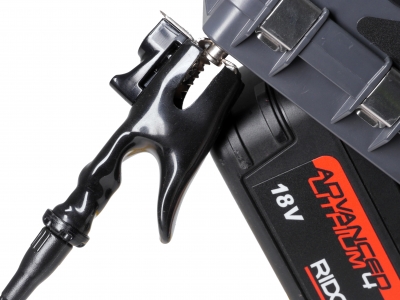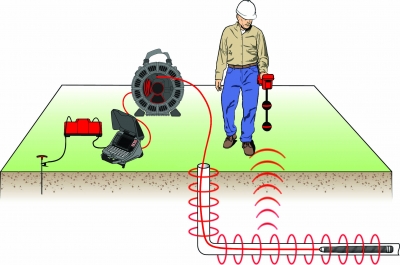Line Locating with a SeeSnake Inspection System
This article describes how to locate the path of a pipe by line tracing the push cable inside the pipe using a SeeSnake® camera reel and monitor. This is especially useful for inspecting non-metallic or non-conductive pipes.
Line trace the push cable by using a transmitter to induce current onto the push cable. For best results, use frequencies 33 kHz and higher. The signal can be traced by utility locating receivers such as the RIDGID® SeekTech® SR-20, SR-24, SR-60, NaviTrack® II, or Scout™.
Steps
- Insert the transmitter’s ground stake into the ground and clip one of the transmitter’s leads to it.
- Clip the other lead to the transmitter clip-on terminal on the back of the monitor.
- Power on the transmitter and receiver and set both to the same frequency. The transmitter may cause interference and can affect image quality.
- Trace the line.
For additional instructions on line tracing, refer to the manuals for the transmitter and receiver models you are using.


